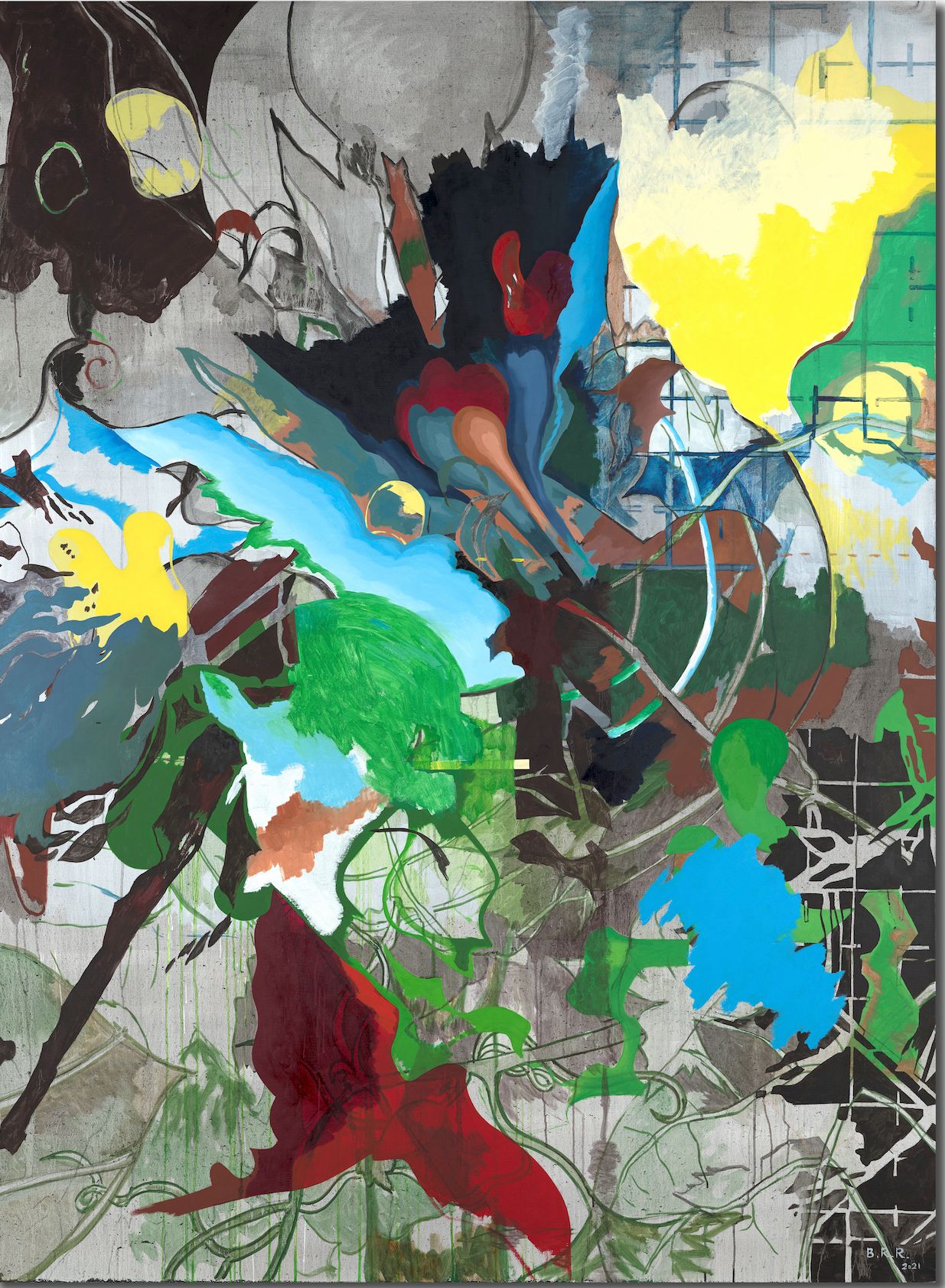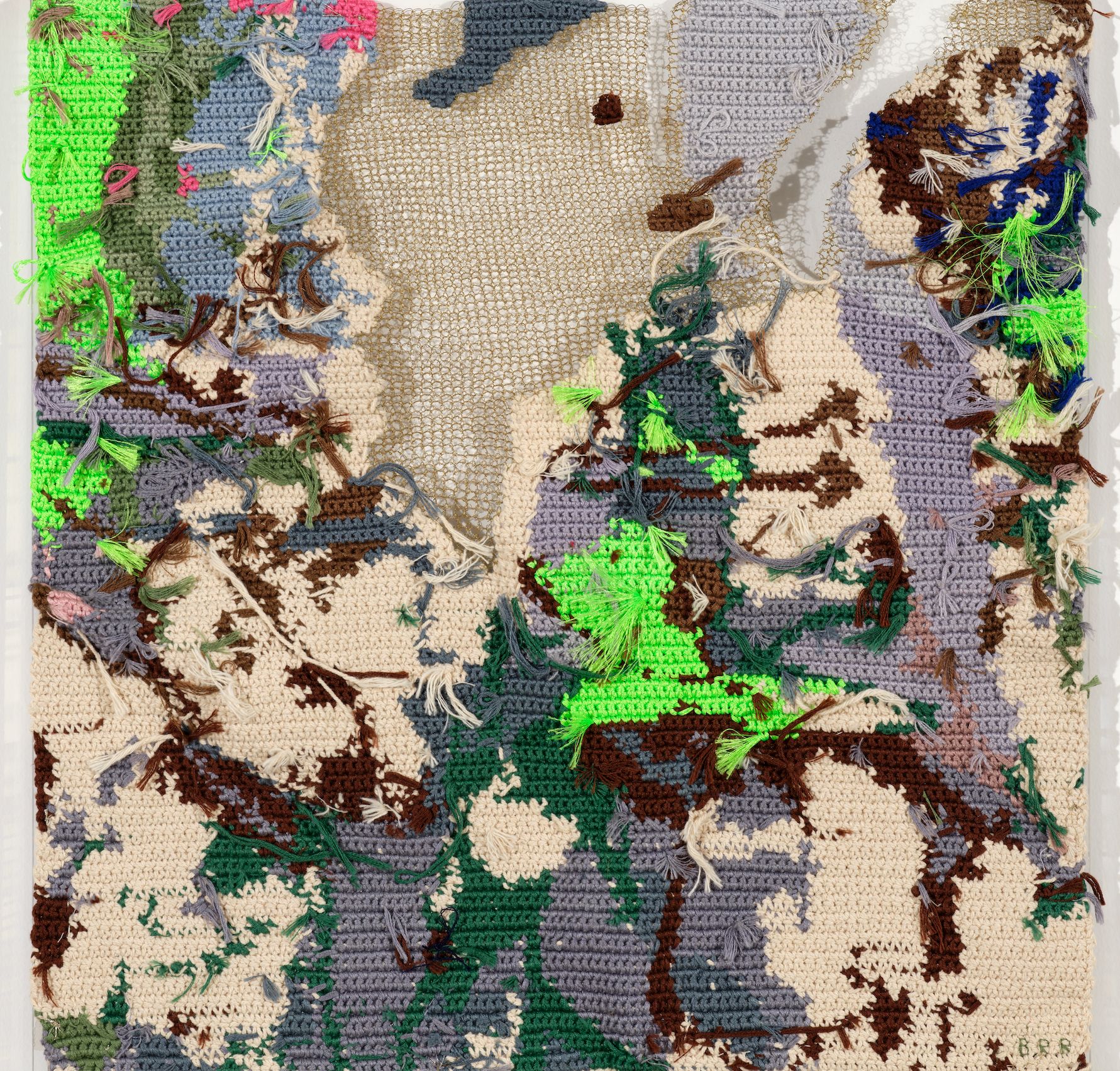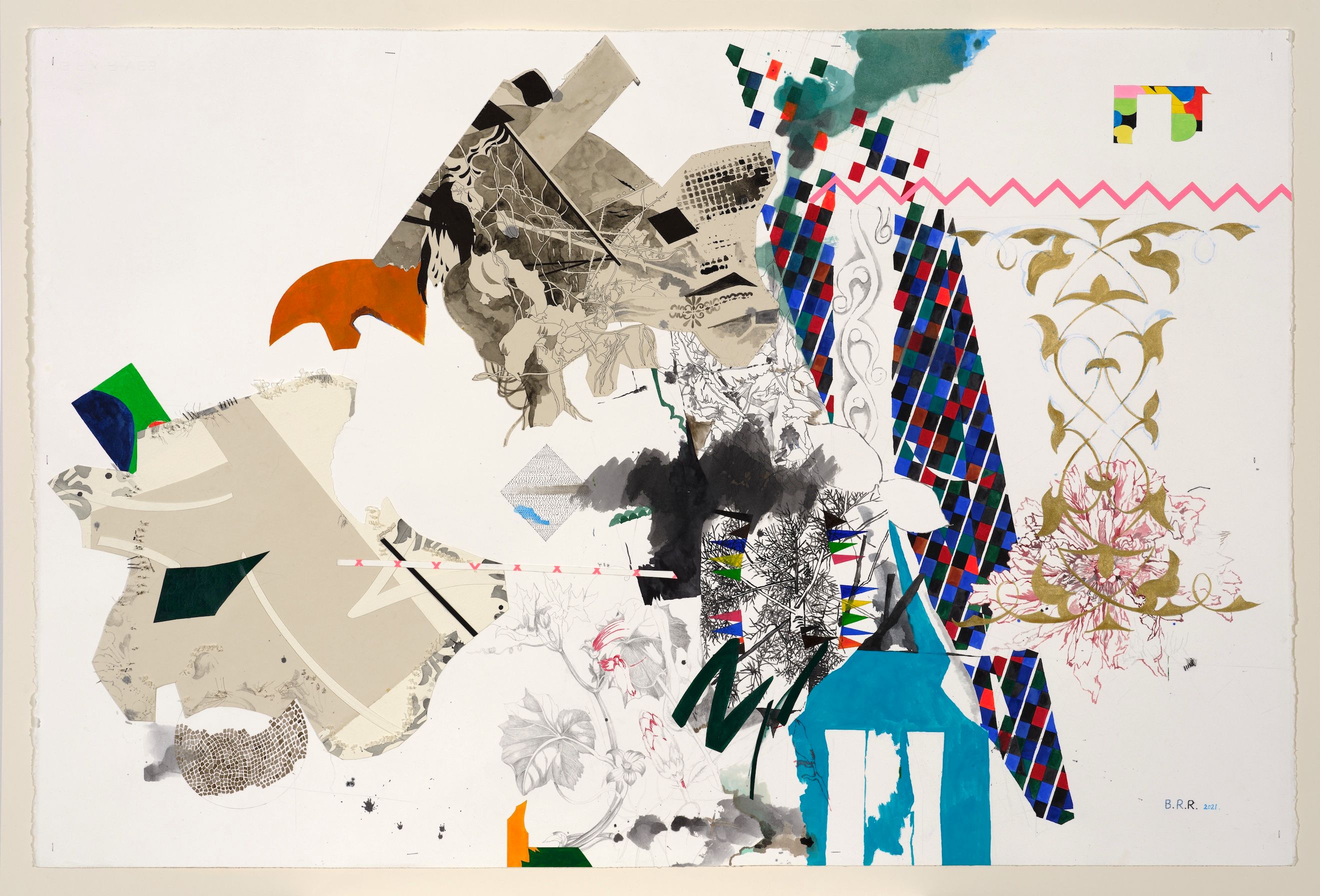
The Chinese-born contemporary artist Bi Rongrong employs a variety of techniques to present intricately interwoven landscapes and cityscapes, effortlessly blending inspiration from both East and West in works that suggest the phenomenology in the everyday – presenting the ways in which the structural forms we so often encounter in the city have a deeply embedded, and often unconscious relationship with nature. Her work has been championed by the likes of Rolls Royce, and she has held numerous residencies in both Europe and China, most recently exhibiting in a group show at the celebrated Gillian Jason Gallery, which brilliantly explored the blurred space between utopia and dystopia. In this rare interview with Culture Collective, the artist unpacks her unique background and methodology, and explains why, if we can better understand our own symbiotic relationship with nature as individuals, we might just be able to shape a brighter future than the one that seems to be mapped out for us.
How did you set out upon the path of being an artist?
The process of becoming an artist was very natural for me. I grew up doing calligraphy with my grandparents, so I was always very interested in painting and drawing. Nobody really taught me art, at that time. It was actually a High School teacher who gave me the idea that I could continue on that path. Everything I had been doing initially was just the process of a plant growing alone, but, then, at college, studying Chinese landscape painting, I learned a new way of looking at the world, and a new way to describe it. It was then that I realised that I really wanted to learn the rules in order to break them – because you cannot just be bound by the permanence of rules, and Chinese painting has so many rules. The thought then occurred to me to go to a totally different place to study, and that is why I then went to Holland to study painting as a post-graduate. What I learned there was so different from what I had already learned, but, of course, what I had already learned was in my blood – so, this way of looking at the world was still influencing me. In this way, the spirit of Chinese painting is still at the core of the work, rather than the rules.
Tell us about the spirit of traditional Chinese painting, and how your work plays with that tradition …
The most interesting thing for me to use from traditional Chinese painting, is the base spirit, because the spirit is always the thing that I need to be involved in, and need to explore more. In traditional Chinese painting, the painters are not only describing the landscape, but also expressing their own situation in the painting – so, traditional Chinese painting is really bound up with each painter’s personal life. I am living in a totally context to them, so that is why I think I should use my own way to understand the current world, and to know my own surroundings, and go beyond just learning rules in a surface sense. When I was seeing Western art, at the time of my post-graduate study, I was immediately thinking, how can I combine my past study to the current world? I am bound to my previous experience, and I want to combine this with new forms to make my own structure – for me, the personal life, and our current environment all weave together, and that weave becomes a unique form of expression.

Is this sense of weaving together cityscapes or personal landscapes predominantly inspired by textiles?
I am interested in textiles, because I feel that that the way they can weave things together is how I view things in the environment as being woven together. When I am doing a residency and meeting new cities for the first time, I look at the cityscape as the surface, and then behind that surface, for me, there are lots of roots, just like the roots you find in a forest. There is something underneath all these things that you don't see on the surface, although the skin can, of course, reveal lots of signals. So, for me the cityscape is just like a landscape that I read through its skin and the patterns you find within the skin. I love to study patterns from all kinds of cultures, and it’s interesting to me that when you look at the people who draw these patterns of the city, you can also very much see how they read nature and natural forms. And I do not mean architectural designers, or that kind of thing, because lots of patterns that occur in our environment are not from professional people, but come from normal working people – and those patterns always contain the abstraction of nature. People bring the hope of nature into their life through patterns, and these patterns become the skin of cityscapes.
What do you want a viewer of your work to feel?
I start from a point of tracing these skins, and when I express them, and show them to people, I want them to feel the environment that I am feeling. It’s like, I am involved in the real world, collecting all these materials, and using them to express myself. Then, when I give them out, I also want people to feel the atmosphere I originally received from the environment. I do not want to give them a piece of a wall to look at in a painting, I want them to feel much more than that – whether I go to nature, or I go to a city, I am always totally immersed in the whole thing, so when I express it, I want people to feel that same atmosphere – as if they, or we, are all a part of the same world. It’s not about the image, material or pattern that I have found. It’s more about the thing in which I am involved – for example, if I go to a mountain and I draw a tree, it is not enough to just show you a tree, it is about transmitting the feeling and emotion I had on the mountain, and the relationship I have with this world.

Is this interweaved identification with nature joyful in nature?
It’s not about celebrating. I think the feeling of joy just comes out it, naturally. I think the emotional connection I have to the work is about repetition everyday, whether I am joyful or sad. I am like a spider making a web, and the need to repeat lies within that process. Sometimes a painting might take me three weeks to finish, because I create it slowly, and repetitively, without knowing what the result will be. I just find a starting point, like a spider and then keep going without knowing the final shape – and one work will often inspire another work. I think that is where the joy is, actually. For example, when I laser-cut a piece for a pattern, I can become fascinated about how the piece will unfold before the cutting, and find that it is very organic in that sense, like a creature, so I will then start to create a stop-motion animation about the unfolding itself. The process drives me, so a very small thing can grow into another thing; I am the just the root, I don't know how it will grow.
What for you is the role of the artist, and can art help us to bridge cultural division?
I think the biggest thing artists have is their freedom to bring so many things together – they are not creating products, but rather conducting experiments. In my last piece for Rolls Royce, I bought traditional Chinese heritage textiles together with some patterns collected from the West, and I bound them tightly together. I think that is a very direct and easy way for an artist to express something without any boundaries. Then, when people see it, they cannot immediately read the connection of the West and the East, but they have a sense of a general inner space that they can go through freely in any direction. I think the beauty is that you can easily break rules, and have people from different cultures feel something in common.

Do you think that is particularly important in the current moment?
I think that is really important right now, because I can feel the cultural distance, when I now travel to the UK. In a sense, lots of things have changed, and we need to reconnect in so many ways – what artists can do is look for that something that we all share in common. And the patterns from nature, which we also find in the city, are something we all share. With nature, you can really create a dialogue with people from everywhere. The reason I say I let my work grow by itself comes from the Chinese philosophy, in which the relationship with nature is everything – because, wherever you are, you have to follow the seasons and the changes of nature. We are all a part of nature, and we are weaved together like nature, so whatever situation the world is in right now, we can find a solution – if we can let nature inspire us, then we will be a better part of it.
All images courtesy of the artist.
Find out more here